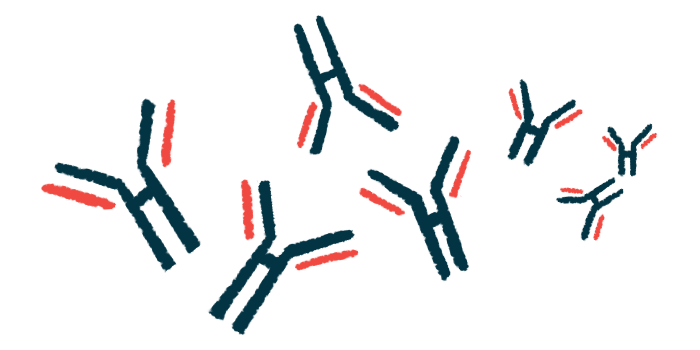Antibody Types Important in ANCA Vasculitis Diagnosis: Scientists
Serotypes influence signs and symptoms of MPA, GPA, study finds
Written by |

Both the form of ANCA-associated vasculitis (AAV) and the specific types of disease-causing antibody a patient has can influence the clinical presentation — the physical signs and symptoms a person experiences — and prognosis of the autoimmune disease, a new study reported.
Using a large U.S. database of AAV patients, researchers found that patients with microscopic polyangiitis (MPA) and proteinase 3 (PR3-ANCA) antibodies — a more rarely observed combination — had a distinct clinical presentation relative to other MPA patients.
Likewise, the rare combination of granulomatosis with polyangiitis (GPA) and myeloperoxidase (MPO-ANCA) antibodies presented distinctly in the clinic, the scientists found.
“Although the impact of these differences on the clinical management and outcome warrants further evaluation, these results support the recommendation of including both the phenotypic diagnosis and ANCA serotype in the diagnosis of ANCA vasculitis,” the team wrote. Phenotypic diagnosis refers to the AAV type determined based on clinical presentation, while serotype refers to the type of disease-causing antibodies found in the bloodstream.
Improved knowledge of these rare subtypes “may provide additional and complementary information useful in the management of these systemic autoimmune diseases,” the scientists added.
The study, “Relevance of combined clinicopathologic phenotype and ANCA serotype in the diagnosis of ANCA vasculitis,” was published in the journal Kidney International Reports.
AAV is driven by the production of self-reactive antibodies, called ANCAs, that cause inflammation and damage to the body’s small blood vessels. MPO- and PR3-ANCAs are the two main types of these disease-causing antibodies.
Investigating MPA and GPA subtypes
The disease also is classified into different clinical types, depending on the organs predominantly affected. MPA, the most common AAV type, is often marked by more severe kidney manifestations, and is usually accompanied by MPO-ANCAs. GPA, on the other hand, typically associates with PR3-ANCAs and may more often show signs of respiratory tract and ear, nose, and throat (ENT) involvement.
While the type of ANCA can directly influence AAV manifestations and outcomes, fewer data are available for the less common AAV-antibody combinations. Specifically, those are GPA with MPO-ANCAs and MPA with PR3-ANCAs.
According to researchers, a better understanding of the clinical characteristics in these groups could allow for more individualized and effective treatment approaches.
To learn more, researchers at the University of North Carolina now evaluated organ involvement, long-term outcomes, and mortality in these less common subgroups by using data from a large group of AAV patients.
All were enrolled in the Glomerular Disease Collaborative Network (GDCN), a long-term patient registry and biobank consisting primarily of individuals from the southeastern U.S. Of 440 enrolled patients, 289 had MPA and 151 had GPA.
The MPA patients had a median age of 59 at diagnosis, and 47% were women. Meanwhile, the GPA patients were 41% women and had a median age at diagnosis of 48 years.
Among the MPA patients, MPO-ANCAs were detected in 59%, and the less common PR3-ANCAs in 41%.
Several clinical characteristics differed between these two groups. Specifically, PR3-ANCA patients were significantly younger and had a higher frequency of joint and ENT involvement than those with MPO-ANCA. They also had less noticeable hardened or thickened tissue (sclerosis) in the kidneys and lungs, but greater tissue death (necrosis) in the kidneys.
Prognoses — including relapse frequency, end-stage kidney disease, and survival — were similar between the two groups.
Differences found between GPA, MPA
A total of 29% of the GPA patients had the more rarely observed MPO-ANCAs, while 71% had PR3-ANCAs. Patients with MPO-ANCAs were significantly older at diagnosis and more likely to be female.
Clinical characteristics of MPO-ANCA GPA included a lower prevalence of ear, nose and throat (ENT) and neurological symptoms, more kidney sclerosis, and fewer affected organs at the time of diagnosis than the PR3-ANCA group. These patients also used cyclophosphamide less often to induce disease remission.
The MPO-ANCA subgroup progressed more often to end-stage kidney disease and had an increased mortality rate compared with the PR3-ANCA subgroup.
Researchers noted that previous studies evaluating MPO-GPA have yielded extremely variable results not always consistent with these findings. Such discrepancies may arise from geographic and ethnic factors or treatment approaches, among other study differences, they noted.
Although not a primary study outcome, researchers also found that PR3-MPA and PR3-GPA showed clinical differences, with PR3-MPA being associated with less ENT and lung involvement, more kidney involvement, fewer relapses, and a higher mortality rate. Between MPO-MPA and MPO-GPA, those patients with MPO-GPA had more ENT and lung involvement, less kidney involvement, and relapsed more often. Overall, GPA patients had more ENT and lung involvement, regardless of antibody type.
“Our results suggest that PR3-ANCA MPA and MPO-ANCA GPA have distinct clinical manifestations and prognosis,” the researchers wrote.
Patients in the GDCN database were largely identified based on kidney biopsies. Thus, according to researchers, individuals without kidney manifestations might have been underrepresented in the study, making it a study limitation. Similarly, other clinical characteristics, like lung involvement, were “rarely reported and not consistently evaluated,” the team wrote.
“In spite of these limitations, the importance of stratifying ANCA vasculitis patients on the basis of clinical diagnosis and ANCA type could conceivably lead to the individualization of induction and long-term treatment plans,” they wrote.
“Further studies are needed to investigate the pathogenic [disease-causing] mechanisms responsible for the effect of serotype on disease phenotype and response to therapy,” the team wrote.







